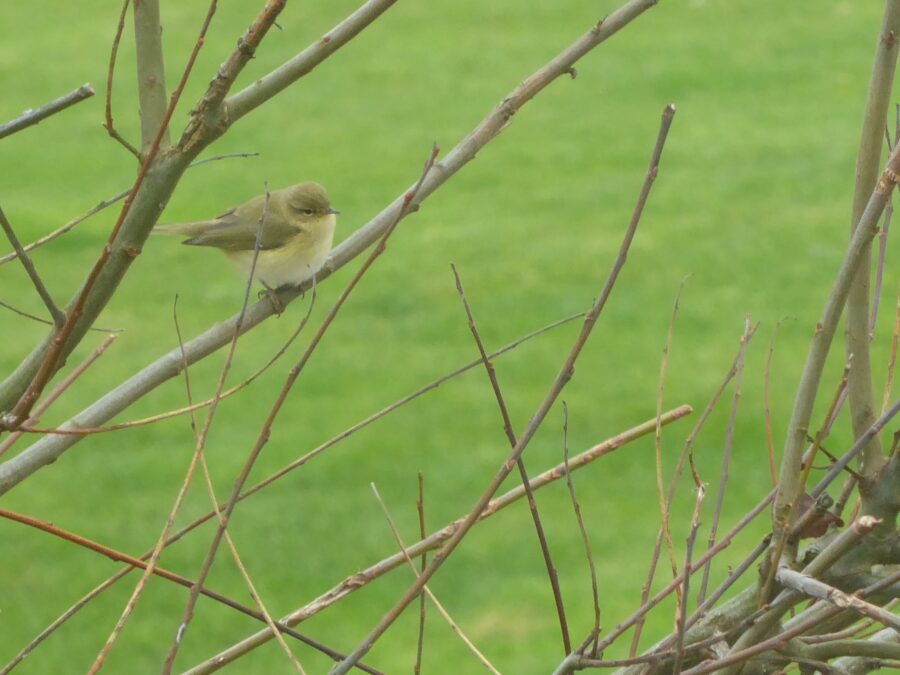I have heard the chiffchaff a few times with its unmistakable ‘chiff-chaff’ call, and I finally managed to track it down in near the top of this tree a little way up the valley. The last time I actually saw one it was on the electric cables that slant across the bottom of the watermeadow. They definitely seem to prefer being up high. They feed on insects. It is interesting that although they build their nests in bushes and undergrowth near the ground, they prefer to nest in habitats where there are taller trees.
-
Chiff-chaff or Willow Warbler?

That’s the leading question. Apparently we ‘re not supposed to see either of them until March or April. However, as previously mentioned, we’ve already heard the chiff-chaff’s song and a “wheep-wheep” call which could be either depending on whether the “wheep” is one syllable (chiff-chaff) or two as in “whee-eep” (willow warbler). I will have to listen more closely next time I hear it.
The main difference between the two in looks is that the chiff-chaff has black legs, and the willow warbler has paler legs. The willow warbler is yellower generally, with a white belly and more prominent yellow stripe over its eye. It also has longer primary feathers on its wings, as it has to fly further. The chiff-chaff has stubbier wings. Finally, the chiff-chaff constantly flicks its tail, whereas the willow warbler only flicks it occasionally.
Originally spotted on the bank of the watermeadow, it is now frequenting the top garden flying from the tree next to the bird feeder to next door’s roof and balcony railing and up the valley to some trees the other side of next door’s garden, where there was another waiting. So, we have a pair, which is exciting.
I’m going to go with willow warbler, as it has dark pinky legs. Its eye stripe is bright, and its belly is white. There is a yellow tinge to its breast and the wings look long. I think the only way to confirm will be to actually see a chiff-chaff and compare the two. So I’ll keep my eyes open.

Showing pink-ish legs
